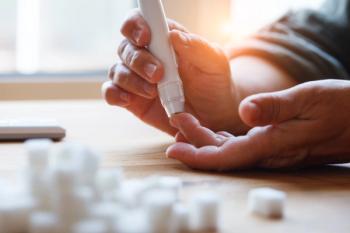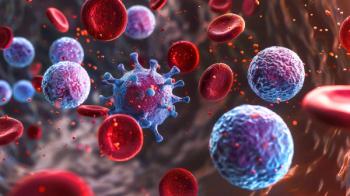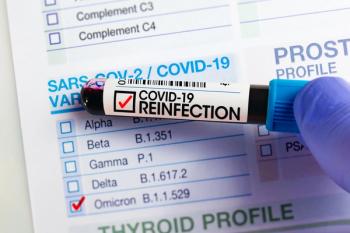
Pharmacists Can Play Key Role in Drug Repurposing
Pharmacists should be aware of what drug repurposing is and how it occurs as due to the vast amount of opportunities that exist.
Drug development and registration is an expensive and time-consuming process that can cost approximately $1.5 billion, can take 10 to 17 years to complete, and is associated with a failure rate of 70% to 90% in clinical trials.1 Drug repurposing is an innovate and creative method to find new indications for medications that allows one to circumvent this productivity gap.2
The intention of repurposing drugs is to find ways to utilize already approved drugs or those that did not complete clinical trials to find new indications.3 Since repurposed drugs have typically been approved already or have some clinical data that establishes their safety in humans, clinical trials are less extensive.
One of the most well-known repurposed drugs is thalidomide, which was first approved in Europe in the 1950s as a sedative and approved in the United States for leprosy in 1998.3 In 2000, Cures Within Reach, an organization that looks at repurposing drugs, supported phase 2 clinical trials at the Mayo Clinic.3 Since thalidomide was already approved for an indication, it was able to bypass phase 1 safety and dosing trials.
It was later approved in 2006 for multiple myeloma.3 With both pathways to approval, an understanding of the chemical or drug, patients, and disease is required.4 Ten percent of new entities reach the market after traditional phase 2 clinical trials versus 25% of repurposed compounds. From phase 3, the rates are 50% new entities and 65% for repurposed compounds.4
Repurposing could help increase the number of drugs that reach the market and the quality of patient care. In 2017, 30% of new drugs were repurposed—of 113 new drugs that reached the market, 36 were repurposed.2 It takes approximately 3 to 12 years and an average cost of $40 million to $80 million for a repurposed drug to reach the market.3
With the reduced time and cost, this can be beneficial and efficient for rare or orphan diseases, as well as diseases that need new and improved drugs. There are more than 6000 rare diseases, of which only 325 have an FDA-approved treatment, so this is a large population that could benefit from repurposed drugs.5 Since repurposing looks at drugs that have already been approved for safety and efficacy, this speeds up the process of finding treatments for orphan diseases.
The concept of drug repurposing can be backed up by 2 core scientific principles.5 The first principle states that any compound that is safe in humans most likely has other therapeutic uses and many repurposed drugs do not demonstrate a connection to the original indication.5
All drugs have off-target effects, which are shown by associated adverse effects (AEs). Using the “known compound-new target” approach can help find potential new indications for these drugs. Just because an undesired effect is occurring from a drug does not mean it is harmful or undesired in all disease states. For example, drug X could lower blood pressure, which could be viewed as an AE in some patients; however, it could be repurposed as an antihypertensive agent since it is known that it has a target or pathway that affects blood pressure.
The second principle explains that any target relevant to a certain disease or pathway usually plays another role in other biological processes or pathways. This means that there are often other pathways not clarified that require research and investigation to establish.5
The 5 stages in traditional drug discovery are discovery and preclinical, safety review, clinical research, FDA review, and FDA post-marketing safety monitoring. Meanwhile, drug repurposing has 4 steps: compound identification, compound acquisition, development, and FDA post-marketing safety monitoring.6 Both routes require post-marketing safety monitoring.
Drug repurposing is not an uncomplicated process, rather it is multi-step (Figure). However, it is associated with higher rewards and lower risks compared with traditional drug development since repurposed drugs have an established basis of safety.6
The computational method is the most common and appealing way to discover medications that could potentially be repurposed, as it appoints the most promising drugs.2 The computational method focuses on the shared characteristics between the drug and disease, and can be conducted as drug- or disease-based. Methods can be sorted into different categories, such as target-, expression-, knowledge-, chemical structure-, pathways-, and mechanism of action-based.2
- Knowledge-based references the idea of using information about the drug—such as the drug target, chemical structure, AEs, pathways, and genomics—to build a model that could assist in the discovery of an unknown mechanism, target, or a new biomarker. This could lead to an association between drug, target, and disease.2 Knowledge-based could also be conducted via expertise and interpretation of researchers or clinical practitioners.
- Target mechanism-based utilizes the understood mechanism of action and target to try to exploit it for another action or disease.2
- Signature-based uses gene expression of the drug and the disease to establish a therapeutic relationship between them.2
- Network-based organizes the relationship between biological molecules to find new properties at a network level to explore and examine their efficacy in different biological phenotypes.6
- Endpoint screening focuses on investigating existing drugs for on and off targets, which could identify a drug that produces unexpected results that are desired in a certain disease or patient population.2
- Examining electronic health records (EHRs) is another way to discover drugs for repurposing. They often contain adverse drug reactions that are not studied or discovered until post-market analysis, making this a useful tool.15 Metformin’s indication for cancer was discovered by utilizing an EHR.7
- The use of pharmacological databases can be useful as well. They contain information on drug properties, as well as drug interactions, laying the foundation of research for drug repurposing.6
All methods that could be used have their pros and cons. A researcher should exploit multiple methods, including different computational approaches to develop strong evidence and understanding that could be researched to develop a repurposed drug.8 There are several disease states that are exploring this method of bringing new drugs to the market, such as prostate cancer, Alzheimer disease, pediatrics, and other oncology indications.9,10,6
Prostate cancer is a complex disease and is the fourth most prevalent cancer but is the second most common in males.10 Repurposing a drug beneficial to this disease could benefit quality of life since most anti-cancer agents have multiple harsh AEs, as well as decreasing mortality.
The use of anti-cancer, anti-diabetic, anti-hypertensive, anti-depressant, anti-inflammatory, and antiviral agents could potentially have a role in treating Alzheimer disease.11 This could change the way the disease is treated and could benefit a large patient population, especially if these drugs could reverse the damage that has already occurred or stop the progression of symptoms.11
In-silico methods such as data-mining, machine-learning, and network-based approaches suggest great prospects for potential repurposed drugs after analysis of genomics and biomedical domains.2 In-silico can be divided into 2 categories: molecular and real world data.2
Molecular can be described as the drug activity, such as drug target and chemical structure, as well as disease pathophysiology, including genomics, transcriptomics, or proteomic data. Real world data can be explained as the identification of undiscovered connection between drugs, disease, and symptoms. In-silico can be useful in the drug discovery phase, as well as the analysis phase, to see whether a drug could have promising results before conducting in-vitro and in-vivo analysis.10
There are 3 key players in drug repurposing: academia and research institutes, pharmaceutical companies, and repurposing technology companies.12 Academia and research institutes focus on the approach of developing a molecule or indication via in-silico and high-throughput screening, and are less constrained by economic success.12
They depend on scientific breakthroughs that attract talent, government funding, and partnership with for-profit institutions.2 Pharmaceutical companies focus on life-cycle management activities that occur later on the development of the product.12
Finally, repurposing technology companies conduct research based on the company’s vision and capabilities, which includes consulting services.12 They use advanced technology, expertise, research, and agility but do not have the resources for clinical trials.12 Due to this drawback, a partnership between pharmaceutical and technology companies is an appealing union in which both companies benefit.12
If drug repurposing is less time consuming and more cost efficient, why is it not occurring more frequently?13 Reviewing some key barriers preventing more repurposed drugs from reaching the market is important.
- Lack of financial incentive. Pharmaceutical companies and investors main focus is profit. When a drug discovery is successful, it could have a higher financial reward compared with drug repurposing.13
- Weaknesses in the existing market.13 If a company finds a repurposed drug but it is the same formulation and dose, it is unable to charge higher for the new indication. Therefore, the company will not be increasing its revenue as expected.13 Even though this will help patients, a company will not pursue repurposing a drug for which they cannot charge more due to patent regulations.
- Legal and intellectual property issues.6,13 Since having a patent is not always possible, this reduces incentives for companies due to the decreased profit. Even if granted a patent, there are multiple manufacturers that are making that generic drug, so the profits will not necessarily go to the company that discovered the new use and holds the patent.
- Drug repurposing is an uncertain business. It holds a lower risk; however, it is not a risk-free market.13 The success rate of approximately 30% demonstrates that there are perils still associated with repurposed drugs during clinical trials and post-marketing.
- Scientists are rewarded for their originality. This means that they are trained to discover new solutions and molecular entities rather than reusing and repurposing already existing drugs.13
There are a few regulations that support the pursuit of repurposed drugs. First, there is 505(b)(2) New Drug Application that supports repurposing existing drugs. It allows the filer to use the data that has been approved in the past.14 This application can be filled for changes such as formulation, dosing regimen, and indication.
Second, the Modernizing Our Drug & Diagnostics Evaluation and Regulatory Network Cures Act, or Dormant Therapies Act, was introduced in 2013. This act provides patent and exclusivity for a 15-year period after FDA-approval to encourage the development of dormant therapies, which are for disease states that need optimal therapies.14
Lastly, The Orphan Product Extensions Now Accelerating Cures & Treatments Act was introduced in 2017 to encourage the repurposing of existing drugs for orphan and pediatric diseases.14 This act extended exclusivity for an additional 6 months for an approved drug or biological treatment.
Repurposed drugs can be brought to the market in several different ways, either on- or off-label, and either generic or under patent. Pharmaceutical companies do not often work off-label, therefore, having a new indication be on-label will bring more such involvement.
Off-label requires lower evidence, whereas on-label requires stronger evidence, so more research is required at greater costs. Having a drug be under patent will bring more profit to the company versus a generic drug that often claims a lower selling price.
Repurposing is a drug discovery method that could help treat patients and improve their quality of life by bringing new therapeutic options to market. This drug discovery method is also beneficial to pharmaceutical companies because it brings drugs to the market faster at a cheaper cost. There are several regulations that support repurposed drugs to provide exclusivity and patent protection.
Pharmaceutical companies could benefit from partnering with a technology or consulting company to help aid in the discovery phase of a potential candidate for repurposing. Repurposing has a high reward and less risk than traditional drug discovery, and this method could be beneficial to patients, physicians, and pharmaceutical companies as a whole.
Pharmacists should be aware of what drug repurposing is and how it occurs as due to the vast amount of opportunities to conduct research—from AEs in health records to computational research. A pharmacist in a clinical setting, as well as a pharmacist in a pharmaceutical company, both have an ability to play a role in drug repurposing.
References
- Roder C, Thomson MJ. Auranofin: repurposing an old drug for a golden new age. Drugs R D. 2015;15(1):13—20. doi:10.1007/s40268-015-0083-y
- Yella JK, Yaddanapudi S, Wang Y, Jegga AG. Changing Trends in Computational Drug Repositioning. Pharmaceuticals (Basel). 2018;11(2):57. Published 2018 Jun 5. doi:10.3390/ph11020057
- Azvolinsky A. Repurposing Existing Drugs for New Indications. The Scientist. https://www.the-scientist.com/features/repurposing-existing-drugs-for-new-indications-32285. Published January 1, 2017. Accessed December 10, 2019.
- Thayer Am. Drug Repurposing Finding new uses for approved drugs and shelved drug candidates is gaining steam as a pharmaceutical development strategy. Chemical & Engineering News. 2012;90(40):15-25. https://cen.acs.org/articles/90/i40/Drug-Repurposing.html.
- Divya Sardana, Cheng Zhu, Minlu Zhang, Ranga C. Gudivada, Lun Yang, Anil G. Jegga, Drug repositioning for orphan diseases, Briefings in Bioinformatics, Volume 12, Issue 4, July 2011, Pages 346—356, https://doi.org/10.1093/bib/bbr021
- Xue H, Li J, Xie H, Wang Y. Review of Drug Repositioning Approaches and Resources. Int J Biol Sci. 2018;14(10):1232—1244. Published 2018 Jul 13. doi:10.7150/ijbs.24612
- Wu Y, Warner JL, Wang L, et al. Discovery of Noncancer Drug Effects on Survival in Electronic Health Records of Patients With Cancer: A New Paradigm for Drug Repurposing. JCO Clin Cancer Inform. 2019;3:1—9. doi:10.1200/CCI.19.00001
- March-Vila E, Pinzi L, Sturm N, et al. On the Integration of In Silico Drug Design Methods for Drug Repurposing. Front Pharmacol. 2017;8:298. Published 2017 May 23. doi:10.3389/fphar.2017.00298
- Bertolini, F., Sukhatme, V. & Bouche, G. Drug repurposing in oncology—patient and health systems opportunities. Nat Rev Clin Oncol 12, 732—742 (2015) doi:10.1038/nrclinonc.2015.169
- Turanli B, Grøtli M, Boren J, et al. Drug Repositioning for Effective Prostate Cancer Treatment. Front Physiol. 2018;9:500. Published 2018 May 15. doi:10.3389/fphys.2018.00500
- Shoaib M, Kamal MA, Rizvi SMD. Repurposed Drugs as Potential Therapeutic Candidates for the Management of Alzheimers Disease. Current Drug Metabolism. 2017;18(9). doi:10.2174/1389200218666170607101622.
- Cha Y, Erez T, Reynolds IJ, et al. Drug repurposing from the perspective of pharmaceutical companies. Br J Pharmacol. 2018;175(2):168—180. doi:10.1111/bph.13798
- What is Drug Repurposing. Repurposing Drugs 101. https://repurposingdrugs101.com/how-can-we-support-drug-repurposing/. Published February 27, 2019. Accessed December 9, 2019.
- Walker N. Accelerating Drug Development Through Repurposing, Repositioning and Rescue. Pharmaceutical Outsourcing. December 2017. https://www.pharmoutsourcing.com/Featured-Articles/345076-Accelerating-Drug-Development-Through-Repurposing-Repositioning-and-Rescue/.
Newsletter
Stay informed on drug updates, treatment guidelines, and pharmacy practice trends—subscribe to Pharmacy Times for weekly clinical insights.


















































































































































































































